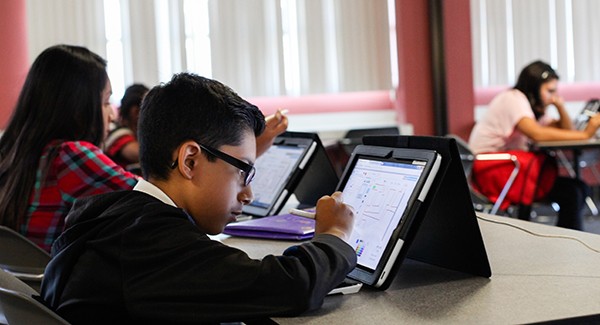Connecting Youth Interests Via Libraries
July 31, 2014
PROJECTS: Leveling Up
TAGS: Connected Learning, Education, libraries
As libraries across the country reimagine themselves, patrons, particularly young ones, are finding them more relevant in today’s technological age.
Examples of innovative projects, tapping into the power of the Internet, include the Chicago Public Library, which offers a free Maker Lab, with access to 3-D printers and milling machines; and two branches of the Los Angeles Public Library (LAPL), where underserved kids are learning to code and tell stories through photography this summer.
Many other libraries and librarians across the country are embodying the principles of connected learning as they evolve in this digital age. Connected learning is learning that is interest-driven, socially connected, and tied to school achievement and real world opportunity. And, libraries are smartly becoming hubs for such learning.
Libraries, which have long been centers of community activity, are uniquely situated to become a nexus of connected learning because their mission centers on personalized and interest-driven learning. They are another space, besides school and home, that allows activities and practices to meld together. As guides to online information and technical literacy, librarians often already are guides to connected learning.
Such is the case for the new summer programming — designed with the intention of supporting youth interest, connecting those interests to academic goals, and providing avenues for youth to be recognized beyond their local setting for their accomplishments — being offered at LAPL.
The connected learning opportunities are in the form of two courses being taught online and at two libraries, the Junipero Serra and Echo Park LAPL Branches. The pilot courses are Coding with Scratch, a free online coding language that the youth at the libraries are using to learn to program video games, and Phonar Nation, a digital storytelling photography course, where youth explore the technical aspects of taking a photograph as well as the power of images to tell stories. Both courses offer youth the chance to participate in a program available to anyone across the nation and beyond through the online platform, Pursuitery.
Celia Avila, a young adult librarian at the Junipero Serra Branch of the LAPL, one of the course instructors in her library, said the main benefit is that kids are seeing that they can easily create and learn new things for free.
“I often have teens tell me they can’t do certain things because of the cost or lack of support but, having these programs gives them a free alternative and a group of supportive figures,” she said. “Our library staff and the Phonar Nation and Coding with Scratch teams are extremely supportive of the students. We’ve created a positive learning environment and eliminated certain roadblocks, like the lack of access to technology, which ultimately helps close the achievement gap.”
The youth who are participating in the courses are making the learning their own. In Coding with Scratch, some participants focus on the aesthetics of the games they’re creating while others focus on the technical coding aspects, each pursuing their own interests.
Avila noted that in the Coding with Scratch class, “a few of the participants have expressed the desire to work on projects at home and have asked if we can explore more advanced additions to the games.”
Offering opportunities to learn coding and photography for free are beneficial to libraries as well as to the youth they serve. To participate in the Coding for Scratch or Phonar Nation courses, go to Pursuitery.com.



